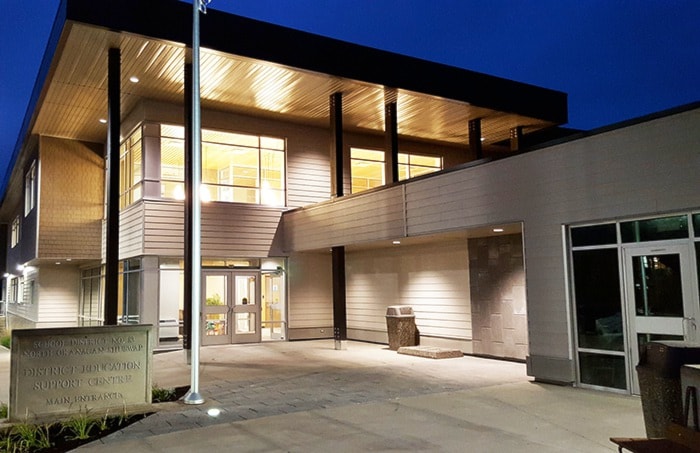Student services took top priority in a detailed spending plan for the distribution of the North Okanagan-Shuswap School District’s annual operating surplus.
Mike McKay, the official trustee who was appointed after the dismissal of the school board last June, approved the plan at Tuesday night’s regular board meeting.
The transfer of school district surplus funds to go towards capital spending, including the construction of a new administrative board office, caused significant community controversy, especially in light of cutbacks to student services at the same time.
This formed part of the rationale for the dismissal of all the school trustees on the board in June.
“Surpluses are expected, they are essentially required because school district are not authorized to carry a deficit,” said McKay.
“The likelihood of landing right on zero dollars is not only slim, not just none, but basically impossible.”
The 2015/2016 surplus was pegged at nearly $1.5 million, with $308,000 of that already allocated to schools, the career program and aboriginal education.
This left approximately $1.1 million in the fund.
In consultation with education partner groups, including the various unions and the District Parent Advisory Council, a plan was created which focused on one-time projects specifically directed at student learning.
The largest amounts included $200,000 for increasing education assistant hours, $150,000 for the phased-in district technology plan, $100,000 for increasing supports in classrooms through the education fund, $80,000 for behavioural assessments and $35,000 for a literacy program. A variety of other programs received smaller amounts.
A transfer of $300,000 was made to the local capital fund, which is used to purchase tangible items for the school district. Examples of these include vehicles, furniture or computers.
This left a small contingency of $33,854.
Noting there will always be surplus funds, McKay stressed the need for transparency in dealing with these amounts.
“The challenge is to make intelligent decisions with how to use the money that is left over from the previous years,” he said.
“I’m pleased with this list and I can stand behind it.”
